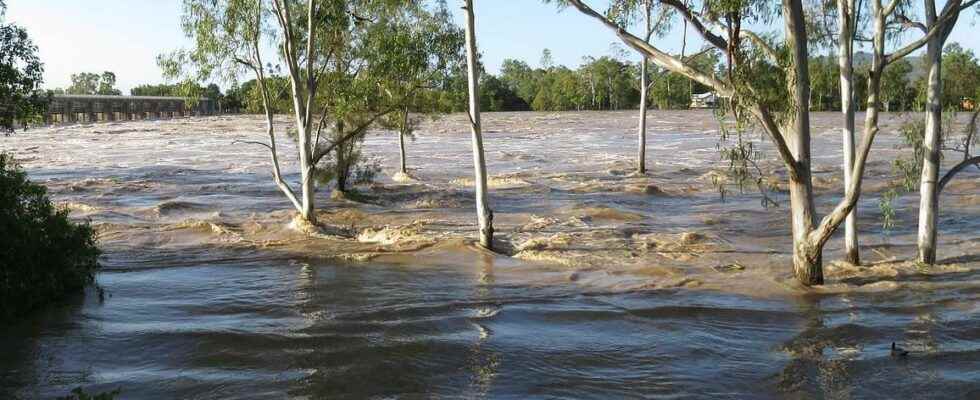The east coast of Australia has suffered torrential rains in recent days, causing massive flooding and killing at least a dozen people. These record rains are the consequence of the La Niña phenomenon, probably accentuated by climate change.
You will also be interested
[EN VIDÉO] How to deal with natural disasters? Every year many natural disasters ravage the countries of the South. Unfortunately, with the few means available, the management of these states of crisis is often problematic. Sébastien Hardy, geographer of the IRD (Research Institute for Development) talks to us during this video about the solutions envisaged by the organization to deal with the problem.
The rains have started to intensify since the end of last week over Queensland and La Nouvelle Wales from South. This Tuesday, February 28, 2022, the authorities decreed the evacuation of 40,000 people due to the precipitation records on the coasts near Brisbane. 300,000 other Australians are currently in areas still at risk. 1,000 people were rescued in a single day, often trapped in their roof, car or on bridges in the middle of flooded cities. More than 15,000 homes and businesses would be submerged by the waters, according to initial estimates. A dozen deaths are already to be deplored, but the balance sheet is not final. According to experts weather report Australians, it would be the biggest climate catastrophe since 2011. Remember that the historic floods that occurred in Queensland in December 2010 and January 2011 had at the time been considered ” an event that only happens once a century ». However, these floods, again historic, of 2022 prove that such an event can happen again.
This is what 20″+ of rain and immense flooding did in Australia! Experts say it’s more likely due to our changing planet.
What extreme weather events have you seen in YOUR area?
We #TWCStormCenterwe’ll share your responses and discuss how this relates to the new IPCC report. pic.twitter.com/DQVG59glOM
— The Weather Channel (@weatherchannel) February 28, 2022
Although heavy rains had been forecast for the area for several days, the meteorologists Australians were surprised by the duration of the phenomenon: if the intense characteristic of the phenomenon was perfectly envisaged, its duration had been underestimated. The torrential rains stagnated longer than expected in Queensland, leading to this dramatic situation. In the most affected areas, between 200 and almost 400 mm were recorded in the space of 24 hours. In the space of 3 days, the city of Brisbane received 80% of its annual rainfall. The Brisbane river suddenly rose to a height of 4 meters between Monday evening and Tuesday morning. In Lismore, one of the worst affected areas, the river peaked at 14 meters on Monday evening, an all-time high. In some cities, the quantity of water received in one day squarely exceeds the average accumulation over one year! The rains have not ended and are shifting between Tuesday and Wednesday further south, towards Sydney.
The La Niña phenomenon in question?
The La Niña phenomenon continues for the second consecutive year. La Niña and El Niño are two climatic phenomena that are characterized by anomaly temperature of part of the waters of the Pacific Ocean: La Niña occurs when the water is colder than average, conversely we speak of El Niño when the water is warmer than average. These thermal anomalies of the water, associated with other climatic parameters, have consequences on the weather the following months, mainly in America, Asia, Africa and Australia. The year 2010-2011 had for example been marked by a very strong La Niña phenomenon and its consequences had been catastrophic in several countries, including Australia with unprecedented flooding. In 2021-2022, the consequences of La Niña were well foreseen : a drought and an heat exceptional winter weather in the southern United States which has been confirmed, and heavier than normal rains over Australia, among others. The intensity of the consequences of La Niña, on the other hand, is not predictable and varies from year to year, but it is highly probable that the global warming aggravates the phenomenon.
The heaviest floods occurred on the day of the release of the latest IPCC reportthe aim of which was to warn world leaders about the extreme consequences of global warming, including unprecedented flooding.
Interested in what you just read?
